It’s a question for the ages and one that almost every pedal-head has asked at some point in their cycling journey: Does riding a bike make your legs bigger?
If you’ve been asking yourself the same question, you’ve come to the right place! In this article, we’ll explore the relationship between cycling and leg size and give you all the info you need to know to start building the body of your dreams.
Key Takeaways
- Cycling strengthens and tones leg muscles by engaging major muscle groups.
- Genetics, hormones, and body weight all play a role in your leg size.
- Higher-intensity cycling and longer rides can help to build muscle in your legs.
- Cycling has several additional benefits, like improving cardiovascular fitness and weight loss.
- Proper bike fit and technique can influence how you build muscle while cycling.

How Cycling Affects Leg Muscles: Does Riding a Bike Make Your Legs Bigger?
Cycling is a fantastic workout for strengthening and toning your leg muscles. This is because the repetitive motion of pedaling engages all of the major muscles in your legs, including the quadriceps, hamstrings, and calves.
As you cycle, these muscles continuously contract and relax. In turn, regular cycling will help to boost your muscle endurance and improve your muscle tone.
And, although cycling may not result in significant muscle mass like weightlifting, it does promote lean muscle. It can also contribute to a more defined lower body.
It’s important to note that cycling is an easy, low-impact exercise that anyone can do. So, if you want sleek, toned legs and better overall fitness, it’s a great workout choice.
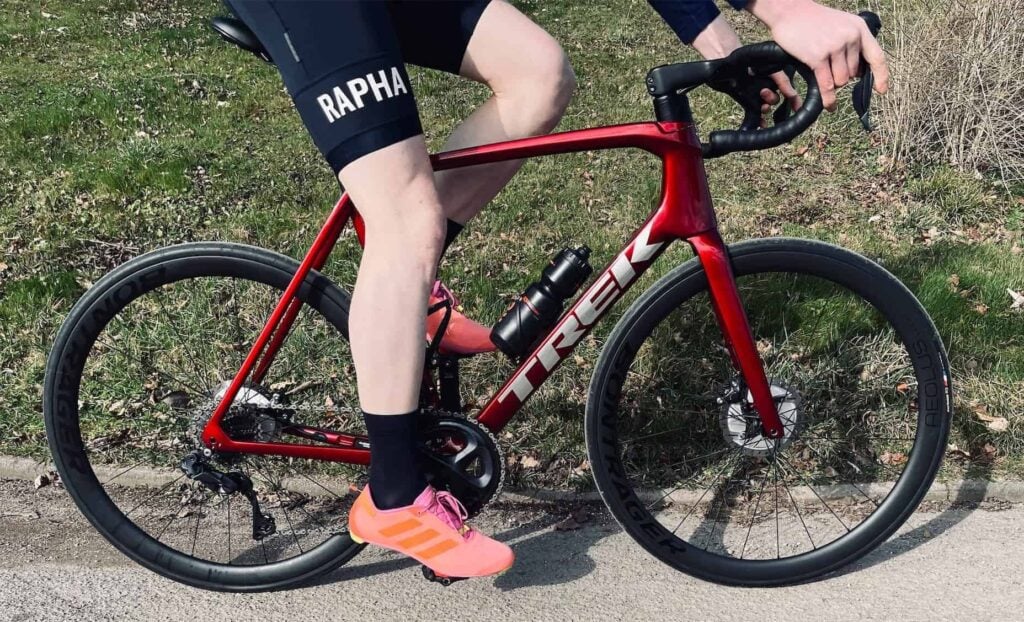
Factors That Determine Leg Size
There are several factors that determine the size of your legs. Firstly, genetics plays a significant role. People have different muscle fiber distributions and, therefore, different potentials for muscle growth.
Although cycling can help build muscle mass, it’s an aerobic exercise that primarily works your endurance muscle fibers. This will help to build endurance in your legs, but not necessarily to build bulging muscles.
Another key factor is your hormone balance. Hormones like testosterone and growth hormones can influence your leg size and make gaining muscle mass easier (or more difficult).
Similarly, your body fat percentage can impact your leg size. For example, lower body fat levels can help to enhance your muscle definition.
Of course, your training routine and exercise regimen can play a crucial role in bulking up your legs. If you want to transform your legs, you’ll want to focus on resistance training and targeted exercises like squats or lunges.
The Role of Intensity and Duration
Some cyclists use higher-intensity cycling methods such as uphill sprints or high-intensity interval training (HIIT) when building muscle mass. This is because these methods place more stress on your muscles. In turn, they can help to stimulate muscle growth a little more than your average bike ride.
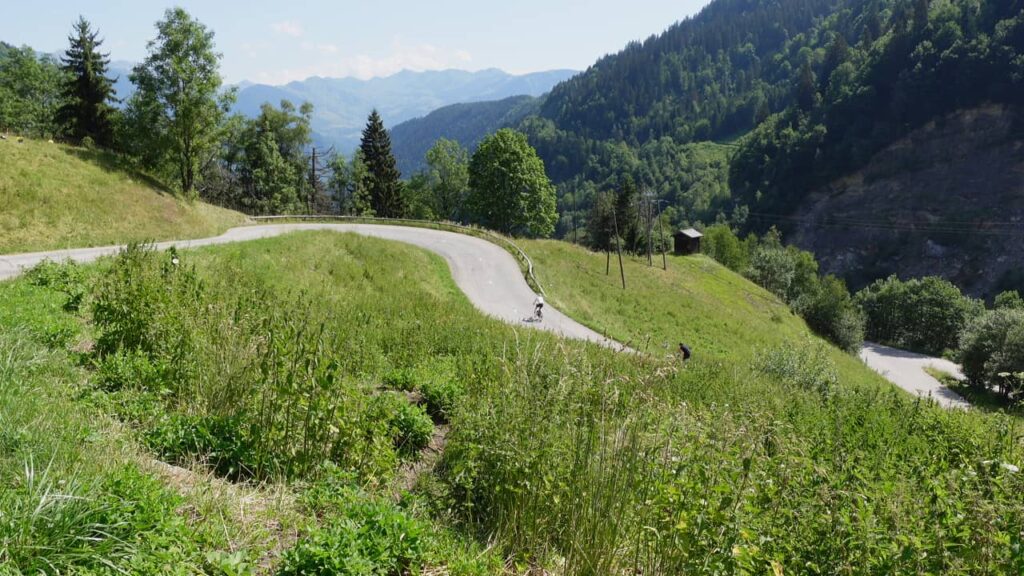
On the other hand, some cyclists prefer to cycle for longer. These long rides, particularly when they’re combined with hill or resistance training, are also great for muscle development.
Still, it may be best to add cross-training into your routine to get the results you’re after. For example, strength training and weight training are great additional forms of exercise. Just remember that the degree of muscle growth will vary for everyone!
Other Benefits of Cycling
Bike riding has plenty of benefits besides its impact on your legs. Some of the most common (and most beneficial) advantages of cycling include:
- It’s a low-impact workout that is easy on your joints, reducing the risk of injury during exercise.
- Regular cycling helps to improve your cardiovascular fitness and lowers your risk of heart and lung disease.
- Cycling helps you burn calories and increase your metabolism, making it easier to lose weight.
- Bike riding improves your well-being by reducing stress and anxiety and releasing endorphins.
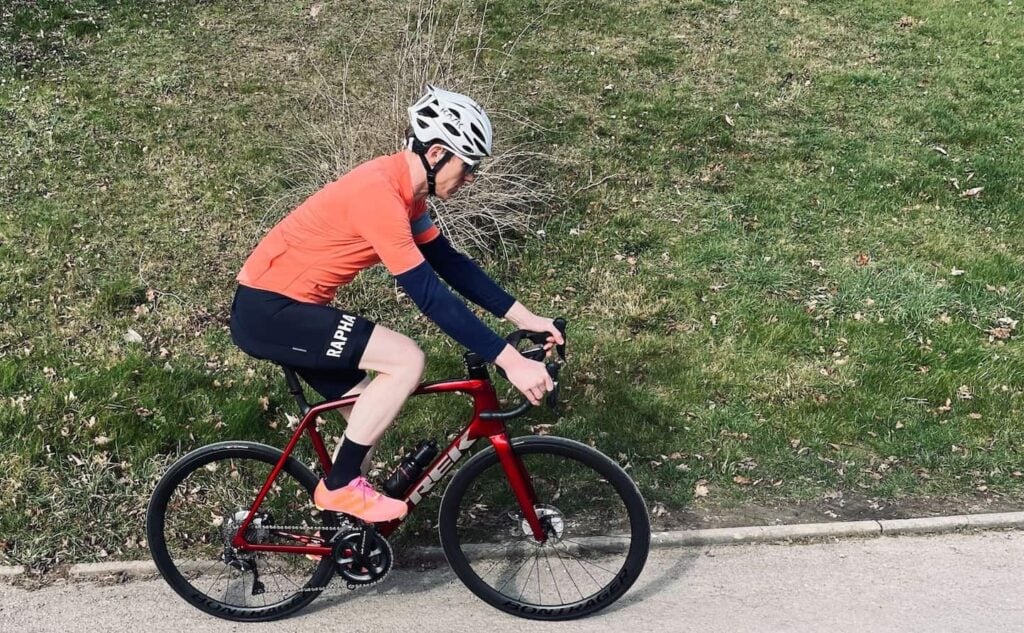
Importance of Proper Bike Fit and Technique
The right bike fit and bike riding technique can help to maximize the effectiveness of cycling in building more muscle in your legs. This is because the correct bike fit ensures that your body is positioned optimally, minimizing the strain on your joints.
Because there is less strain, you’ll have more efficient power transfer from your legs to the pedals. Of course, this means that there is more effective muscle engagement when you’re riding.
Additionally, maintaining a specific rhythm and using the right gears on your bike can help to target specific muscles and prevent unnecessary injury.
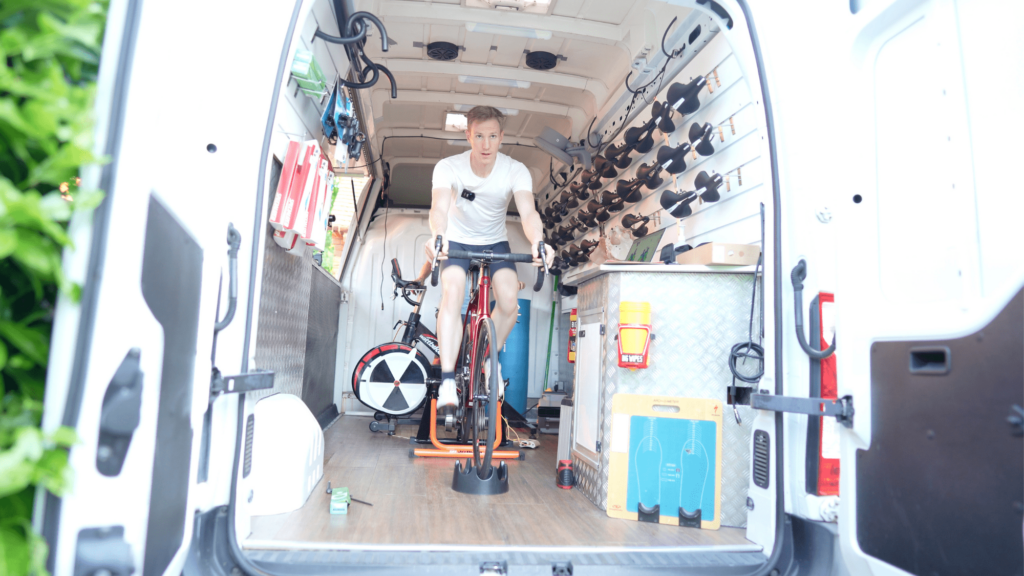
Next Steps: Incorporate Cycling Into Your Workout Routine
Incorporating cycling into your workout routine involves a few key steps. First, you’ll want to determine your fitness goals and assess how cycling can help you achieve them. Then, you’ll need to choose a type of cycling that fits your needs.
For example, indoor cycling is a great choice if you don’t own a bicycle but have access to an indoor bike at the gym.
Remember to start introducing cycling sessions into your weekly schedule gradually. You’ll want to start with one or two shorter rides a week and increase the number and duration of your rides over time.
The most important step is to complete your cycling workouts with cross-training. Strength training and weight training can do wonders to help you transform your skinny legs into sleek limbs.
But keep in mind that cyclists’ legs are known for having toned and powerful muscle rather than bulky thighs and bigger calves.
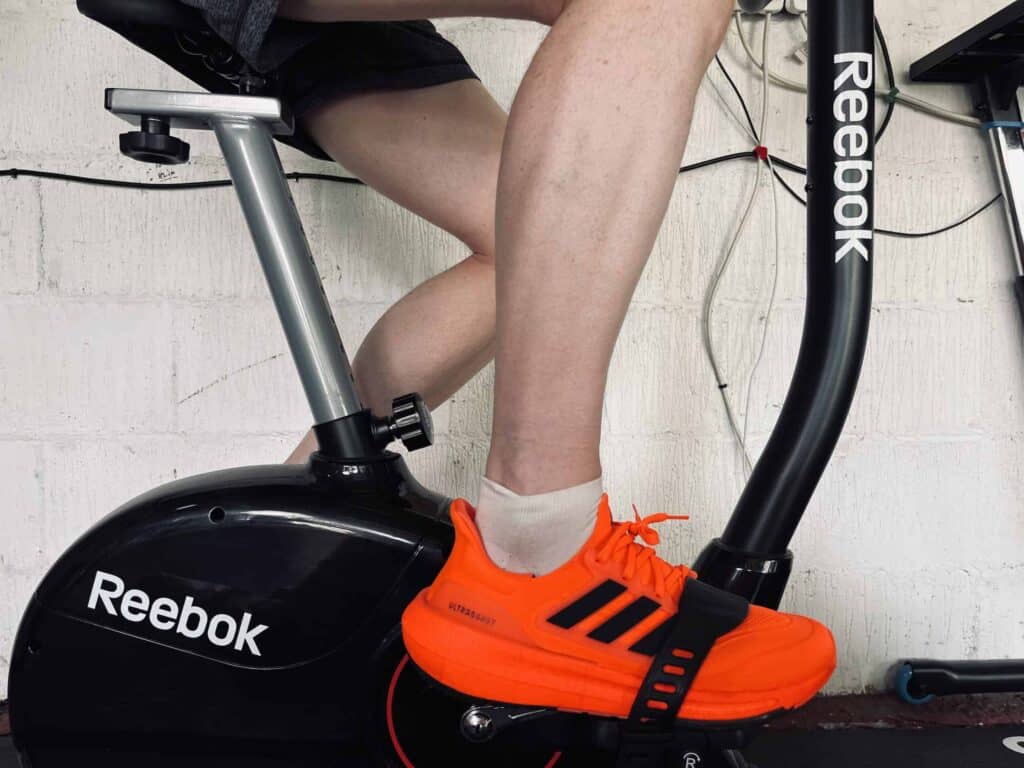
FAQs
Can cycling replace weight training for building leg size?
Although cycling can contribute to muscle development, it’s not a direct replacement for weight training. This is why most cycling enthusiasts or professional cyclists use cross-training in their cycling plans. Cross-training can help compensate for any gaps in your fitness and build muscle.
How long and how often should I cycle to see results in my leg muscles?
Consistency is key! Ideally, you’ll want to aim for regular cycling sessions. These should be around three to five times a week for a minimum of 30 minutes per session. Over time, you’ll start to notice the difference in your muscle tone, strength, and endurance.
Can you get toned just from cycling?
Yes, cycling can help you get toned. It’s a low-impact exercise that targets your legs and core, helping to build muscle definition over time. The extent of toning depends on the intensity, duration, and frequency of your cycling sessions.
Incorporating hills and high-intensity intervals can also boost muscle toning. However, combining cycling with strength training exercises is recommended for the best results in toning your body overall.
Does cycling make your legs skinnier?
Cycling can help shape your legs and build muscle, resulting in more toned and sculpted legs. However, it doesn’t necessarily make your legs skinnier.
While cycling is a great way to burn calories and potentially lose weight, it’s important to remember that weight loss largely depends on creating a calorie deficit – burning more calories than you consume.
